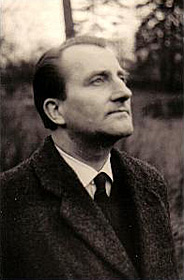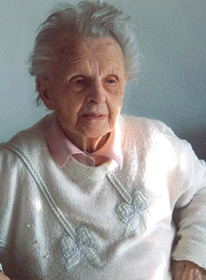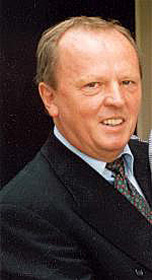Introduction
Preface
History
Origin of the name Terlusollogy®
Sun and moon polarity
How breathing types are determined
Erich Wilk
Erich Wilk (1915-2000), who first formulated the theory of breathing types, was exceptionally intelligent and an extremely talented violinist. He noticed that although teachers at the master classes he attended at Berlin University held the bow in different ways they still managed to produce a perfect and pure sound. Wilk also noticed that he himself found it easy to play without music when the moon was waxing, but very difficult when the moon was waning.
Upon graduating Wilk was called up when World War II broke out and posted to the Sahara. He was soon captured and sent to a prisoner of war camp where he stayed until the end of the war. During this period he observed that some inmates coped very well with the hot dry climate whereas others fell ill. Some felt great when there was a full moon and others when there was a new moon. An excellent observer, he noticed several indications of the rivalry between sun and moon. Thus, depending on the time of its birth, a baby is either an inhaler or an exhaler. If the moon is higher than the sun (lunar energy = principle of expansion) the newborn baby is an inhaler, i.e. affected by the moon. If the sun is higher than the moon (solar energy = principle of contraction) the newborn baby is an exhaler, i.e. affected by the sun.
Charlotte Hagena
In the 1960s Dr. Charlotte Hagena (b. 1909) suffered from serious cardiac insufficiency. She was given digitalis and told to drink plenty of coffee. This treatment was ineffective and her condition continued to deteriorate. Eventually she was admitted to a sanatorium in Bad Pyrmont (Germany), headed at the time by Dr. Schaefer-Schulmeyer. This lady was working closely with Erich Wilk, applying the principles of his findings on the cosmic effects of sun and moon on the earth and on human beings. Charlotte Hagena was cured of the cardiac problems that had troubled her for so many years without medication, simply by doing specific exercises and following a special diet. She found the method intriguing and decided to study it and practise it in her turn. She has lived according to the principles she learnt at the sanatorium ever since and is currently a very hale and hearty centenarian.
For three years she worked closely with Erich Wilk in her paediatric practice. The observations she made while treating infants, young children and even adults over a 40-year period confirmed again and again Erich Wilk’s theory of two distinct breathing types with different behavioural patterns. Success rates were astonishing and allowed a hitherto unseen accuracy in the choice of treatment. Eating disorders in infants were a thing of the past once their breathing type had been determined. Furthermore, awareness of the expansion and contraction principle, determined by a law of nature, was developed into a useful therapeutic method.
Christian Hagena
Christian Hagena, the son of Charlotte Hagena, was introduced to this method as a young child and grew up with it. Aged 14 he met Erich Wilk and found this extraordinary man completely fascinating. He later studied medicine and in 1980 began to assemble his mother’s notes into a manuscript. The first book was finally published in 1990 and sold out within six months; this motivated Christian Hagena to continue writing. In 1996 he began to train terlusollogists with his mother and now holds regular seminars to teach the theory of terlusollogy.
Statement by Christian Hagena:
From a scientific point of view we must first of all consider terlusollogy as a hypothesis, i.e. formulate predictions and observe whether they materialise or exist. We choose a hypothesis which we then attempt to confirm with an experiment. And that is precisely what has happened: experiments over a period of 40 years have confirmed the accuracy of our hypothesis beyond all reasonable doubt. The doubts that even we had at the outset have been completely eliminated.
Unfortunately, we have neither the facilities nor the financial means to carry out systematic research. Therefore, we hope that this home page will encourage scientists to make use of the facilities offered by research institutes and universities to support the theory of terlusollogy with clinical trials, to develop it further and to determine its underlying forces and physical principles.
Origin of the name Terlusollogy®
Charlotte and Christian Hagena have summarised the observations of Erich Wilk under the term terlusollogy. Terlusollogy is made up of the first syllable of the three Latin words terra, luna, sol (earth, moon, sun), the three pillars of our immediate universe. The earth is said to be the calming influence, moon and sun the two opposing forces.
The gravitational forces of sun and moon
A law of nature
The three observations made by Erich Wilk that are fundamental for terlusollogy are:
1. The bipolar influence of sun and moon on the human body.
2. The existence of two distinct breathing types that are determined at birth when the baby takes its first breath depending on whether solar or lunar energy is dominant.
3. The method of determining the dominant energy at the time of birth.
The manifold effects of sun and moon on the earth have been sufficiently documented. Tidal movements are caused by the gravitational interaction between the earth and the moon; spring tides are caused by the sun and moon acting together. In summer, when the sun is at its strongest, we grow taller faster.
The sun has a vertically elongating effect on the earth,
the moon a horizontally expanding one.
An infant’s breathing type, which will remain unchanged for the rest of its life, is determined by the energy that is dominant when it is born and draws its first breath.
This means that when we are born we are either susceptible to the expanding influence of the moon and are inhalers) or to the contracting influence of the sun and are exhalers). One or the other will be predominant for the rest of our lives and never change. This is an immutable fact that overrides everything.